Rosa and I had to decide how to spend the second day of our trip to Krakow. Our choices were either the infamous Auschwitz concentration camp where millions of people were killed by the Nazis or the Wieliczka salt mine- one of the world's oldest operating salt mines. We chose the latter as the former seemed to be quite a depressing place to visit.
We booked a tour from the hotel we were staying in at Krakow and were transported to the town of Wieliczka, about 20 Km away, where the salt mine is based. The mine receives a whopping 1.5 million visitors every year and is a UNESCO world heritage site.
The salt mine is has been producing salt since the 13th century and it runs almost 300mts below ground level. The mine itself is an astonishing 300Kms long but the tour is only for about 3.5kms.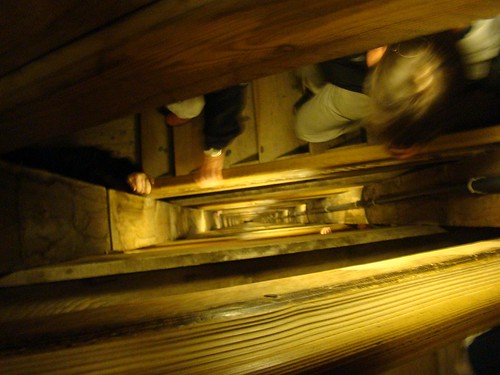
Entry into the mine is via a wooden stairway of about 400 steps and to us it seemed like a never ending spiral going down. I wouldn't advise claustrophobic people to attempt this tour!
Our guide on the tour was a well spoken Polish man named Sebastian, whose primary interest was in ensuring we did not buy any of the "over priced" souvenirs from within the mine. He said he would show us where to get the best prices at the end of the tour. We instantly smelt a rat!
As we descended into the chambers dug out by the ancient miners, we saw our first glimpse of salt.
The miners typically spent 10-12 hours per day inside the mine, but after work some of them would stay behind to carve statues out of the salt and these figures remain as salt statues.
Our first statue was that of Copernicus -who was born in Poland and proposed the theory of the Sun being the centre of the universe.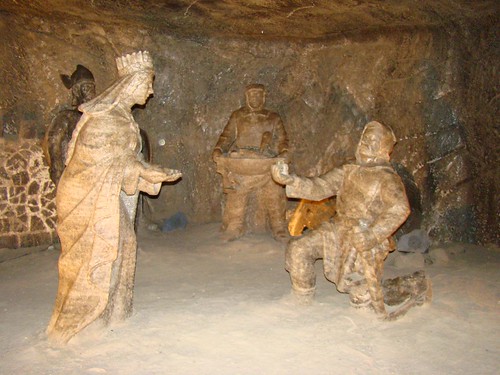
A little further down we got to know the story behind the origin of the mine in Polish folklore style. It seems the salt mine owes its origins to a Polish princess who was married off to Bulgaria. At that time Poland was a powerful kingdom and lacked everything but for salt. The princess - Kinga used her divine powers to locate the salt mine for Poland. Apparently she threw her ring into a salt mine in Bulgaria and it was recovered in the salt mine in Wieliczka! Today princess Kinga is considered as a saint- The blessed St Kinga.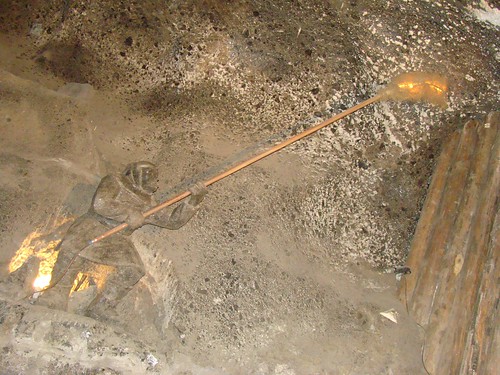
In reality though, salt was a precious commodity at the time. It was used in not just in cooking and preservation, but also for tanning, making gun powder and also as a form of payment. The Kings took an active interest in developing the mine and the salt from it constituted about 30% of the kings revenue.
Mining could be a dangerous affair with the frequent encounter with methane and other noxious gases and specialised skilled labour was required to excavate the salt.
In exchange, the miners were well paid and were rich people. They were more often paid with salt.
Mining was a respected occupation and it is not the sorry affair we read about in the medieval iron or coal mines.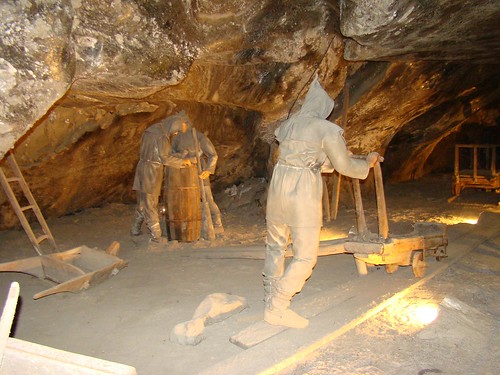
Originally the men did back breaking work digging and bringing the salt to the surface in carts.
However, later on horses were introduced. Most of the horses perished on their way down the mine, but the ones that survived stayed in the mine for the rest of their lives. Apparently, the horses were treated well and due to the healthy air in the mines , lived longer than horses on the surface!
The miners later developed ingenious technologies to bring up mined salt and at the same time transport timber down for building works.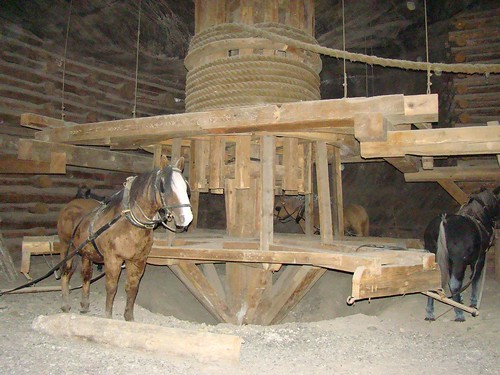
The statue above is that of King Casimir the Great, who in 1368, laid down the principles of operation of the mine and organised the mining.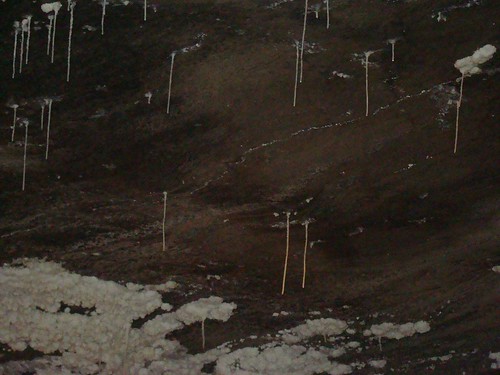
Above: salt stalagmites
Above: A depiction of a family obtaining salt through evaporation of brine, prior to discovery of the mine.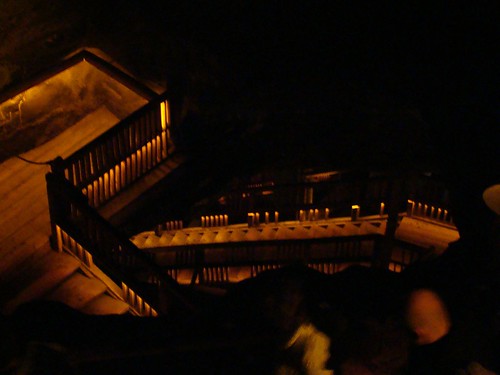
Above: illuminated stairway leading down from one of the chambers.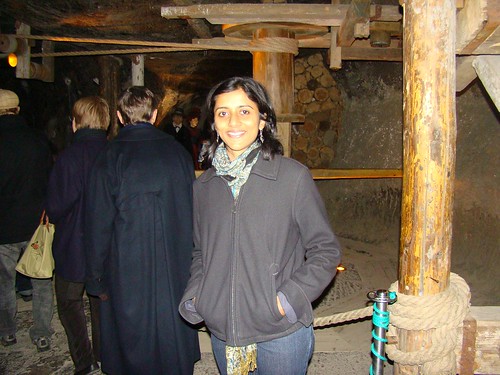
Above: Rosa poses in front of one of the contraptions used to bring mined salt to the surface chambers.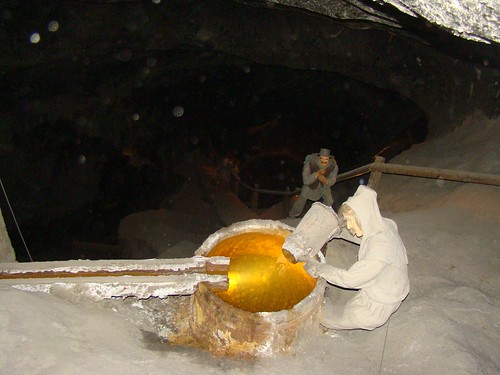
Above: water coming from above was always a problem as salt would dissolve in it. The miners had to channelize it carefully.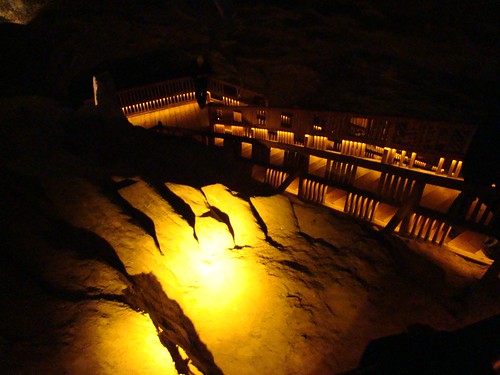
Above: In the foreground is the actual steps carved out of salt. Miners had to carry salt upwards on their backs using these steps. A fall would often cause a cascade of accidents as miners behind them would also be affected.
Above: A goblin carved in the salt. They were supposed to help miners in the night when they were asleep
Another channel for the underground stream.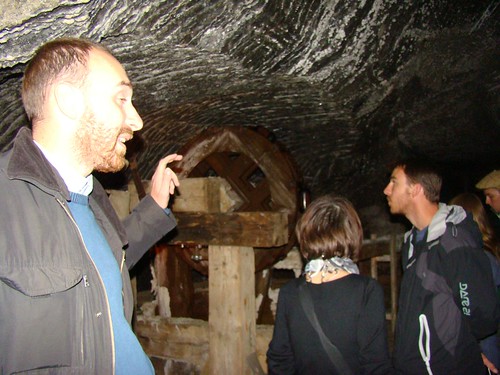
Above: Sebastian explains the working of a human operated mining lift.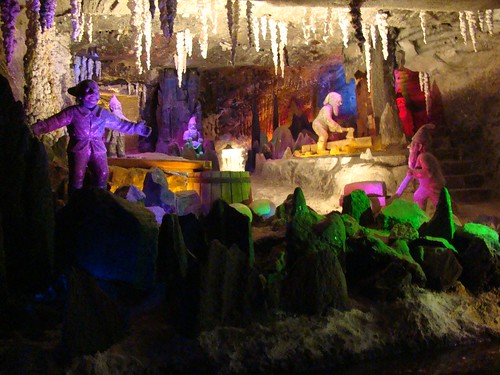
Above: Rock carvings dedicated to the elves and Goblins which played their role in the miners folklore.
Above: Relegion played an important role in the miners lives. Every working day started and ended with a prayer session. This crucifix carved out of wood is exceptionally preserved because of the salty atmosphere.
Above: A statute of the Madonna presented by a polish general.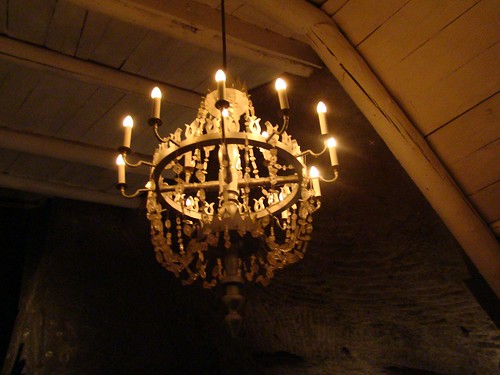
Above: A chandelier carved out of reconstituted salt crystals.
Finally we came to the famous “underground salt cathedral of Poland” , an entire chapel hewn out of the rock salt: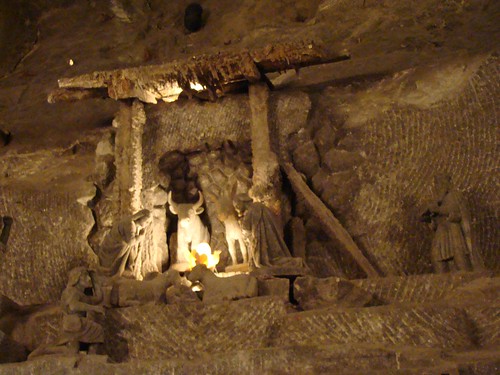
The miners accessed the chamber through a small hole seen below, and carved out the rest of the chamber: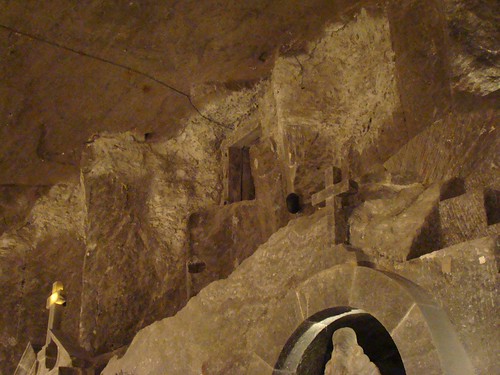
Carved on the walls are scenes from the bible.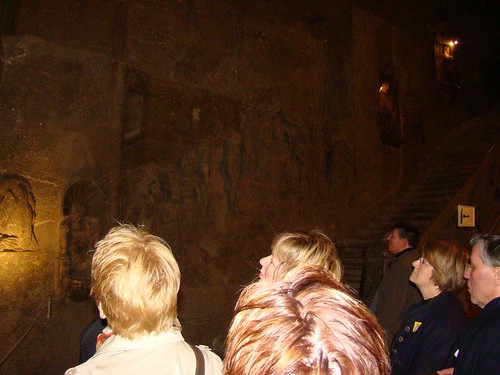
Most of these were from ancient times but they have been supplemented through the ages by more modern sculptors.
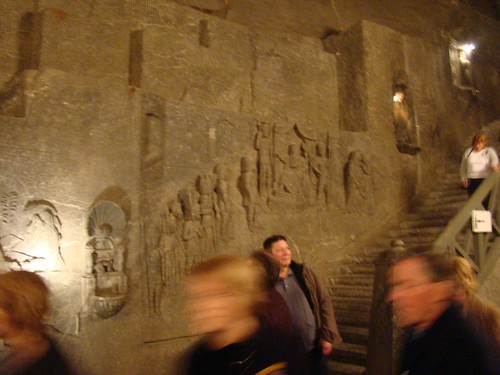
There are some notable mistakes in a few carvings such as the one below, in which the donkey has lifted both its right feet instead of one right and one left.
The chandeliers are an exceptional piece of carving: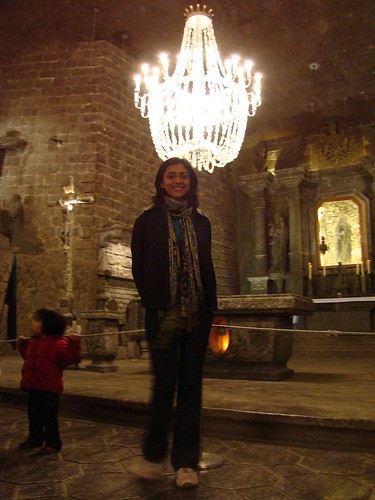
The carving below too has a notable error. The Jewish priests are seen to be reading from books and not scrolls!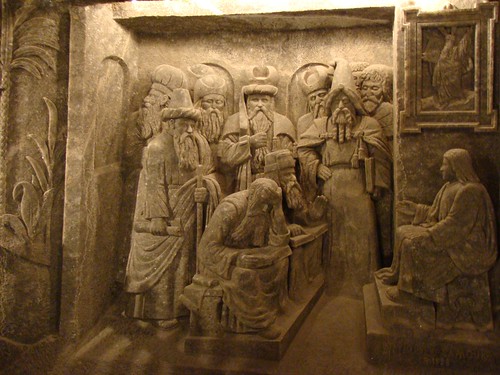
Below a copy of Leonardo da Vinci’s last supper: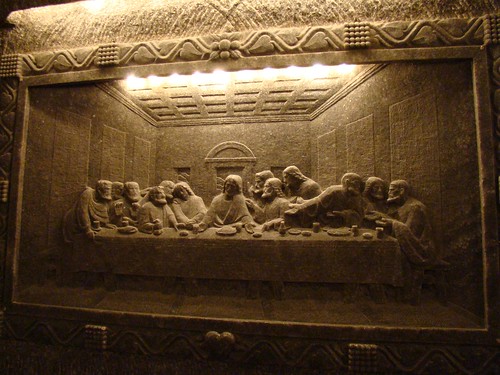
Below: I pose in front of a scene of Jesus with the doubting Thomas: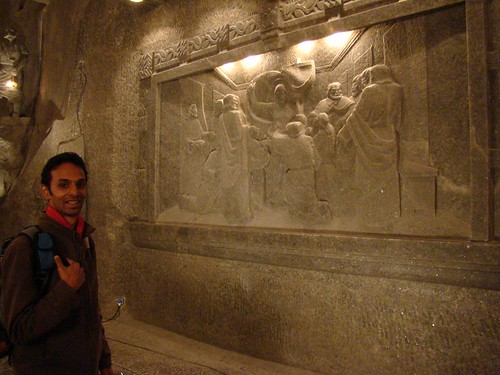
A self portrait of the sculptor himself, seen to be watching over his carvings:
Below: a view of one of the chandeliers from below: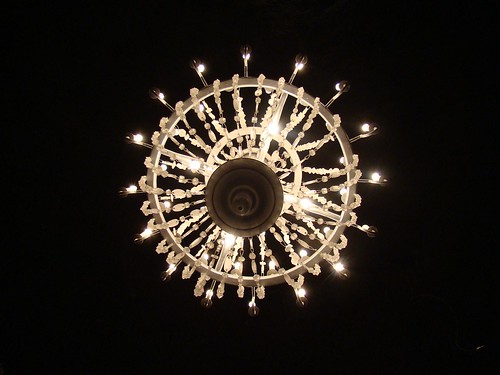
We finally came to the last chamber on the tour route, one which holds an underground lake and which is also supposed to contain a vitalising atmosphere, breathing in which is claimed to cure people off asthma and allergies.There is an underground therapy centre here, which was started in 1826 and continues even today.
One of these chambers were converted to slave factories used by the Germans during the second world war to build plane engines.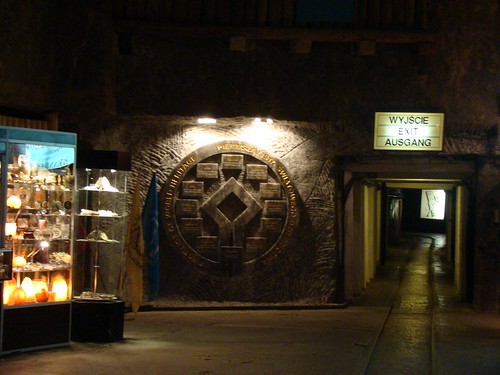
The above photo shows the latest addition to the carvings – the UNESCO emblem. The carvings and statues in the mine are slowly being dissolved by the atmsphere and it is thought they will eventually be degraded. Efforts are on to try and protect them.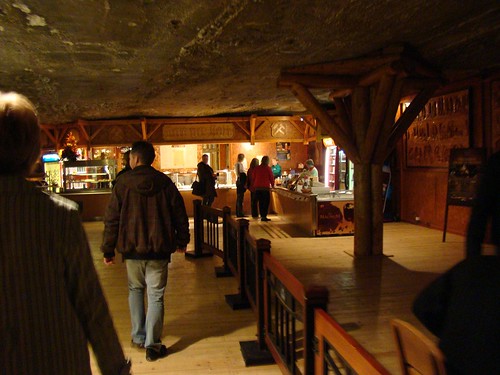
Finally the tour was over. We got a few minutes free to explore the visitor shop which included a post office – perhaps the deepest post office in the world – from where we were able to post cards.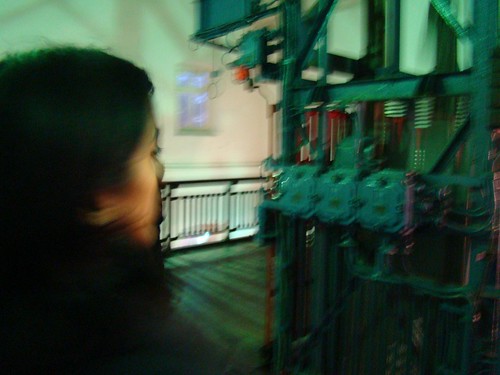
We then resumed our journey back to the surface in a cramped lift that sped up at 4mts per second. On coming out our guide directed us to the shop which he claimed offered the best bargains in the region., especially for their famed salt lamps.
It turned out that the shop was owned by his sister-in-law!
The visit to the Wieliczka salt mine was a memorable one and will remain in our fond memories of Poland. We spent the night back at our hotels and left the following morning for an uneventful journey back to a wet and cold England, where we reside until another opportunity to explore turns up.
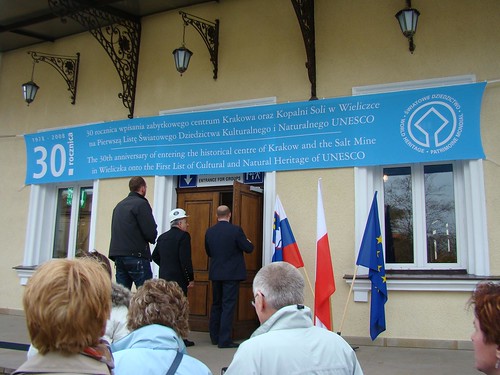
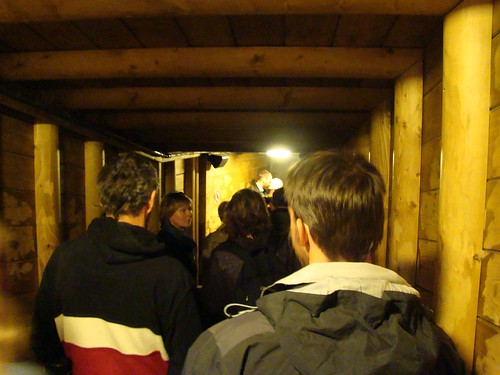
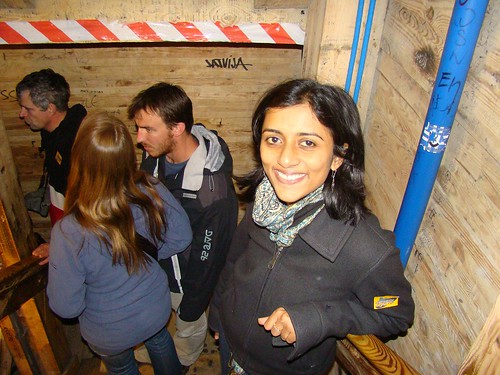
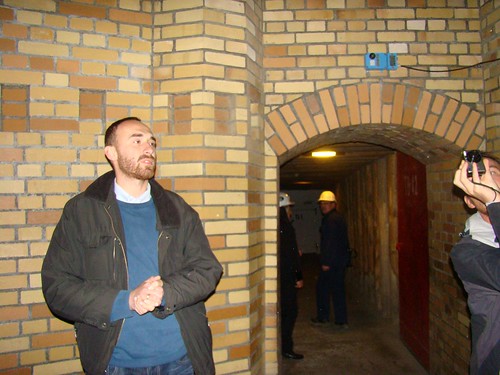
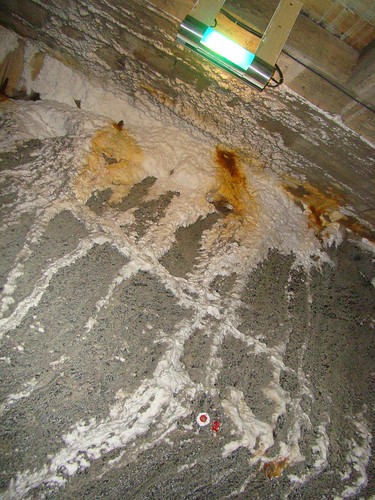
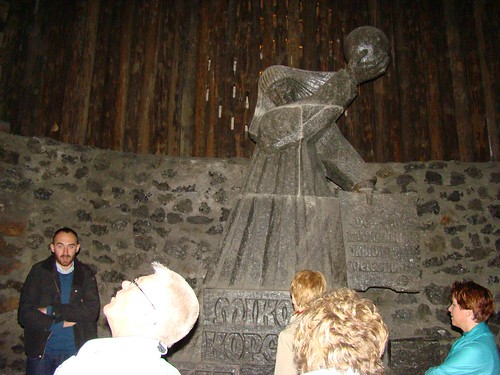
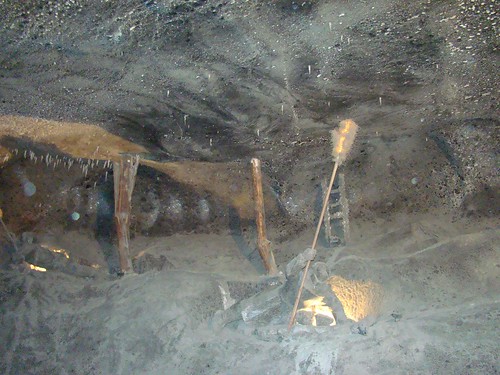
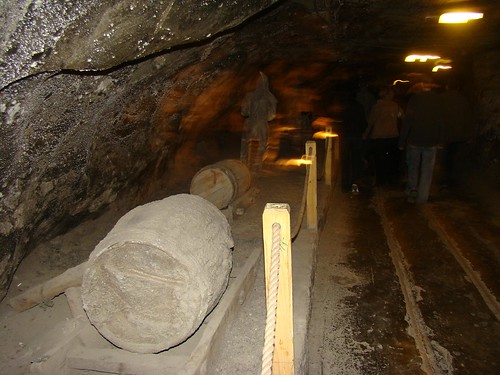
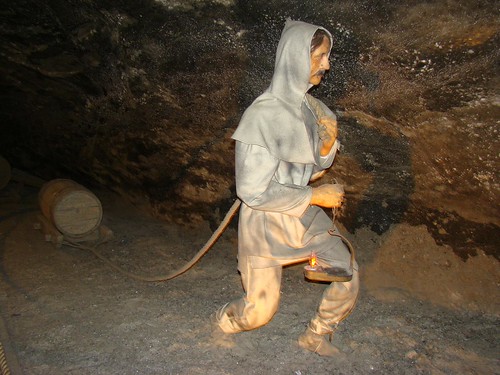
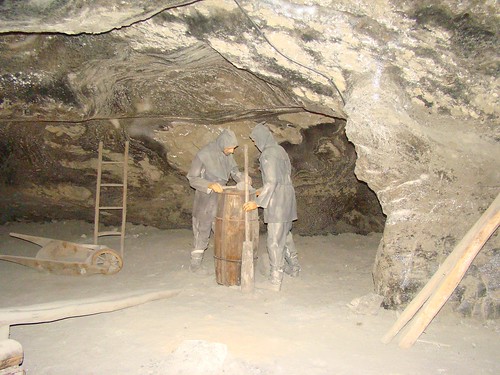
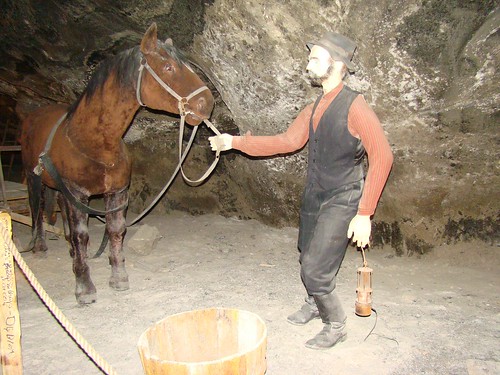
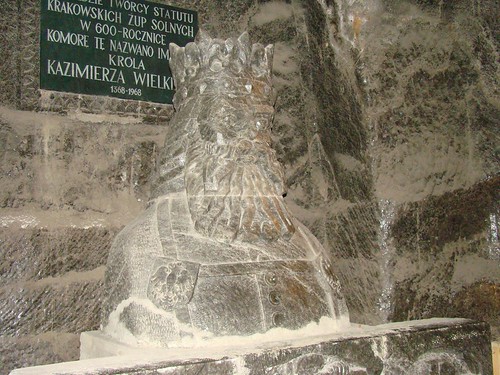
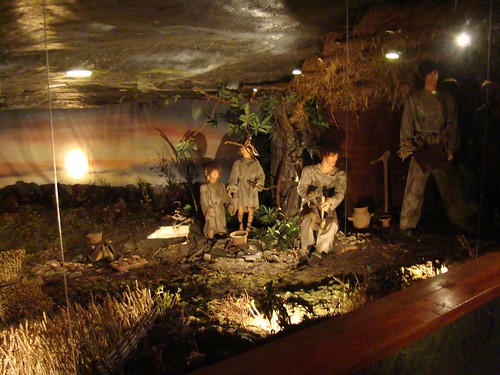
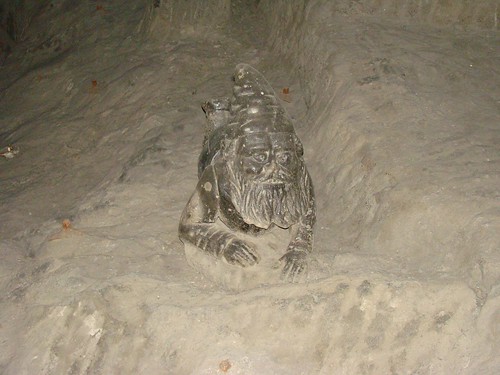
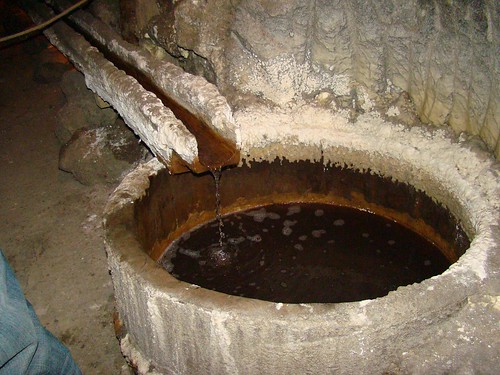
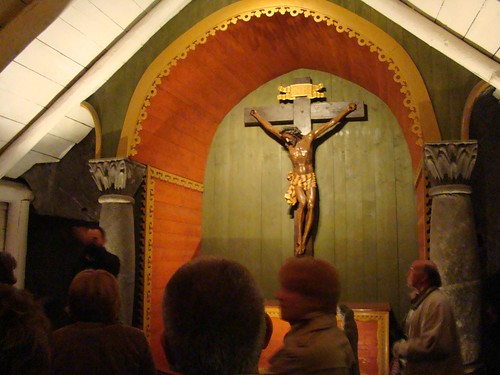
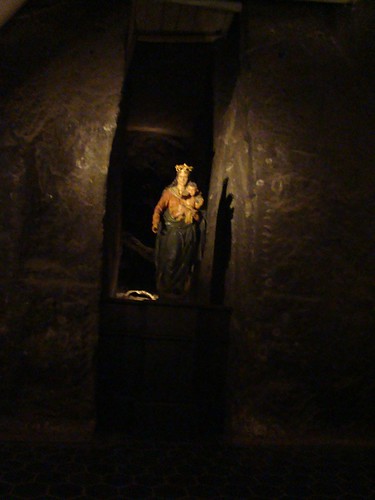
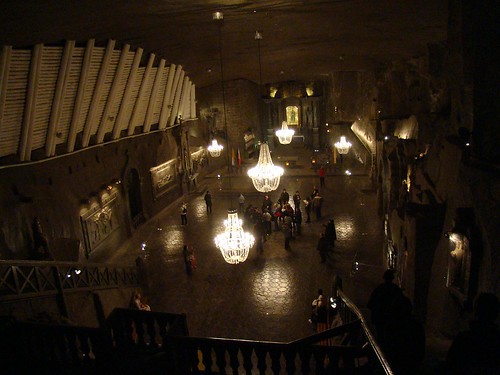
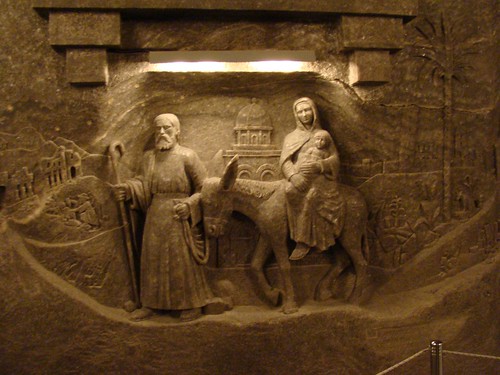
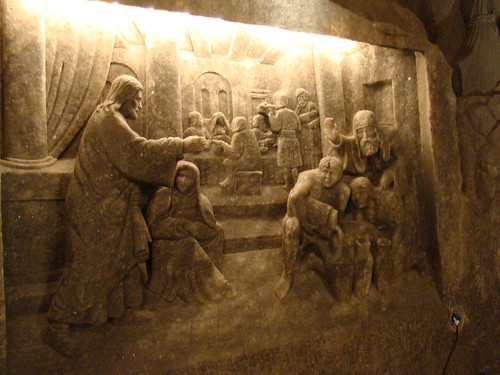
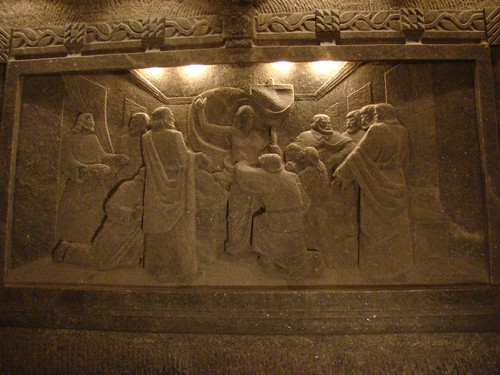
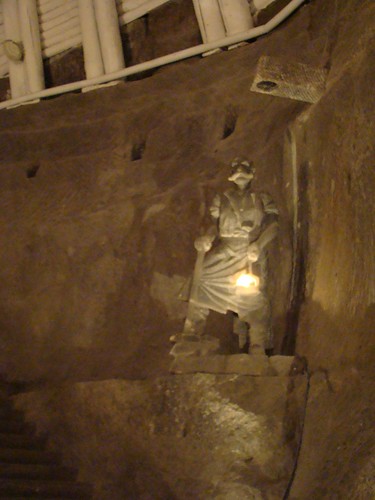
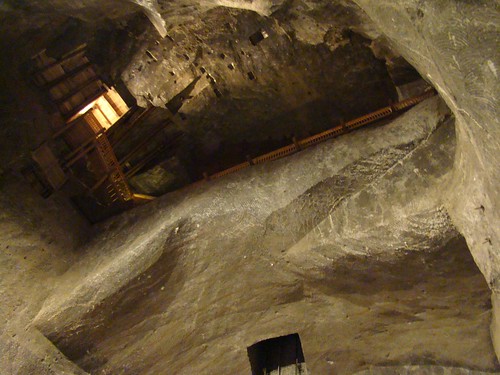
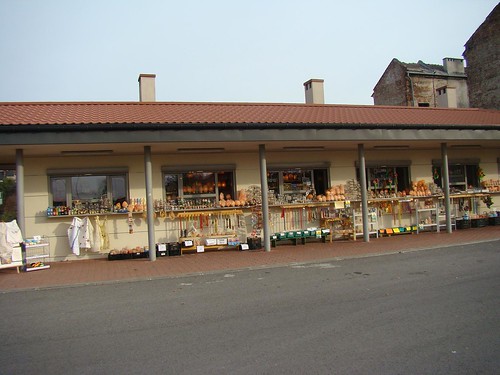
No comments:
Post a Comment